Occasionally I’ll see someone using cheap, ball ammo for self defense. Sometimes this is borne out of simple frugality. More frequently it is the result of misunderstanding how modern, expanding, hollowpoint ammunition behaves. In this article I hope to convince you otherwise. Bottom line up front: don’t use FMJ ammo for self-defense if (and only if) you have better options available.
Don’t Use FMJ Ammo for Self Defense
Here are three examples of fairly knowledgeable people using FMJ ammo for self defense.
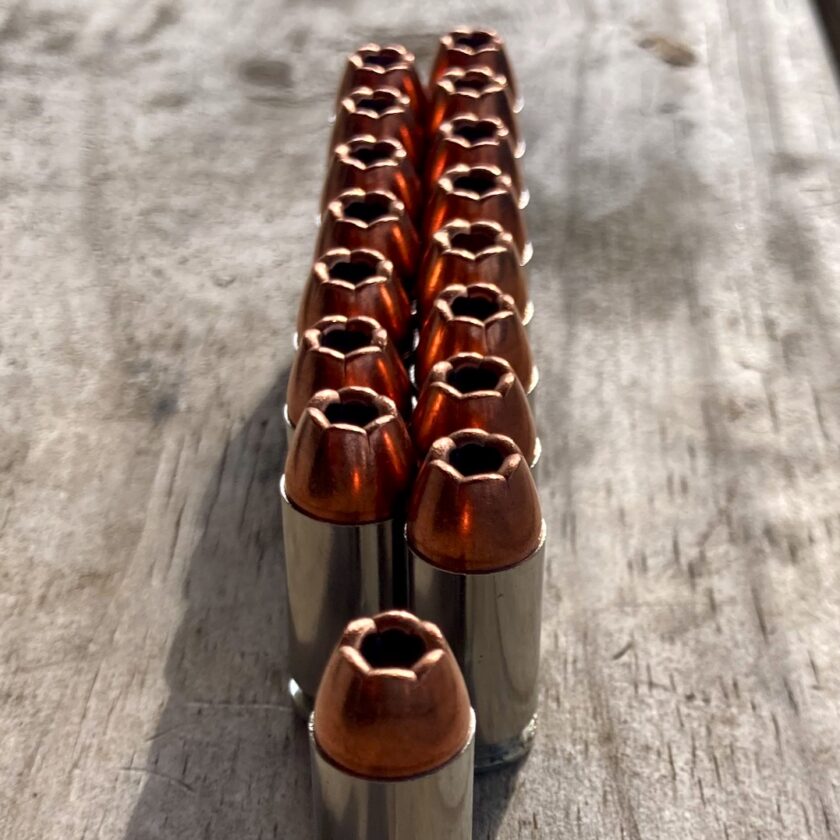
In one instance I was working overseas as a contractor. We were issued Federal Hydra-Shok ammo for our Glock 17s. This was a dozen or so years ago; the Hydra-Shok was dated, but still considered decent ammo. I went to the range with a fellow employee who pulled out his combat-loaded magazines. To my surprise, they were all loaded with ball ammo. I asked him why and he stated, “if I have to shoot through a car or something those hollowpoints are just going to disintegrate.”
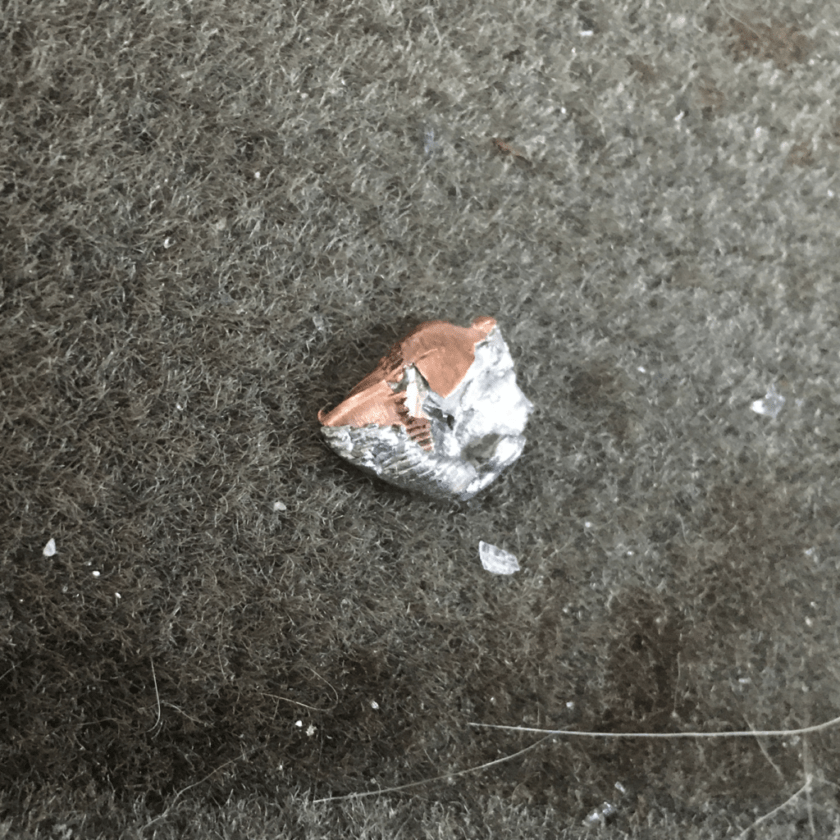
Recently my brother-in-law was showing me the revolver he’d purchased for his wife. I opened the cylinder to find it loaded with three high-quality hollowpoints, and three cheap FMJ rounds. When I asked, “why the ball ammo?” he told it it was in case he had to shoot through a wall or similar barrier.
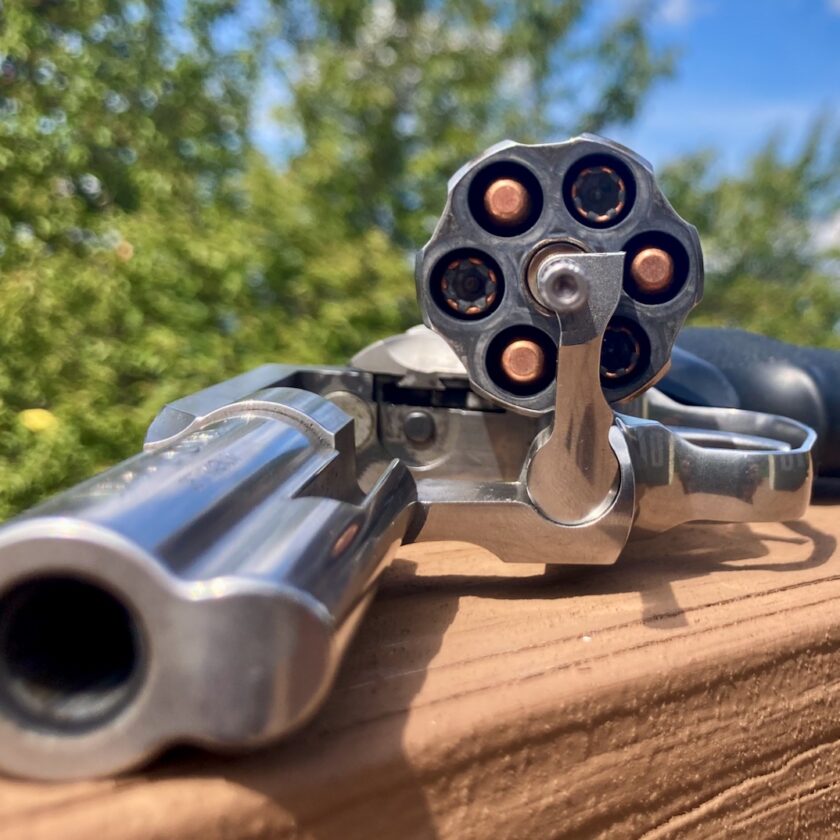
Most recently I read a book in which the author stated that he kept his home defense pistol’s “clip” loaded with FMJ ammo. The stated reason was in case he had to shoot through furniture and doors if needed. This attitude – across guys of drastically varying skill level – demonstrates a fundamental misunderstanding of hollowpoint design and their failure mode.
Let’s talk about that just a little bit, beginning with a discussion about hollowpoint ammo works.
How Hollowpoints Work
Hollowpoints, as the name implies, have a hollow cavity at the tip of the bullet. Upon encountering fluid-filled tissue, a hydraulic action occurs, forcing the bullet to expand or “mushroom.” Expansion is generally a good thing. Rather than making a very narrow, ice-pick style wound channel, expanding bullets cut a much wider wound track, which is more likely to cause rapid blood loss. Their larger diameter is also slightly more likely to strike a critical organ or structure.
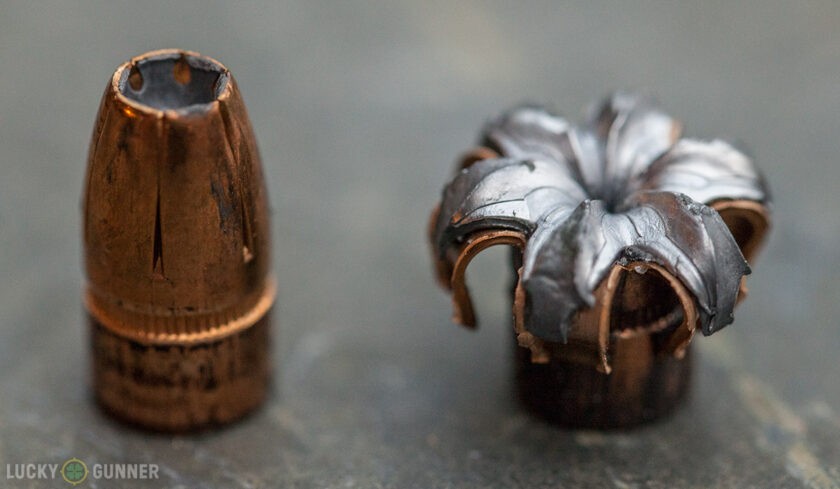
Modern, expanding, JHP ammunition is carefully engineered. It is designed to expand within a certain velocity envelope and in a certain medium. It is also designed not to expand if the velocity is too low, or if it hits the wrong medium. The key term in the description above is “fluid filled tissue.” Fluid is almost always required for the hydraulic action necessary to expand a hollowpoint. A round fired through the stuffing in your couch cushions is not going to expand. Even if it does expand a little, it will still have sufficient energy on the other side be a major problem for the bad guy.
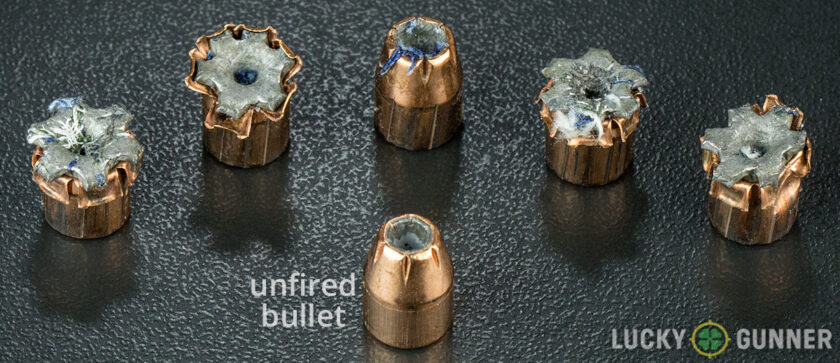
Some extremely good hollowpoints will even expand in human tissue even after encountering an intermediate barrier. These bullets are called “barrier blind” because they behave the same even after hitting a barrier. Examples are the new Speer G2 JHP and the Hornady Critical Duty. Vista Outdoors (the owner of Speer and Federal ammunition) publishes the results of how its bullets perform against the FBI Protocol of bare gel, heavy clothing, drywall, plywood, sheet metal, and auto glass.
How Hollowpoints Don’t Work
At this point I would like to address a couple of the concerns against hollowpoints. One is that they will begin expanding in intermediate barriers as light as winter clothing, resulting in insufficient penetration. It’s not uncommon at all to hear someone recommending switching to ball ammo as the temperature drops and clothing gets thicker.
This is simply not true; hollow points will still perform, even through clothing. If they fail, they are much more likely to become clogged with fabric and fail to expand than they are to be slowed by a winter coat. Which means they will perform a lot like a full metal jacked round. You wouldn’t wear a down coat or carry a couch cushion to a gunfight and expect it to offer ballistic protection; why would you expect it to protect a bad guy?
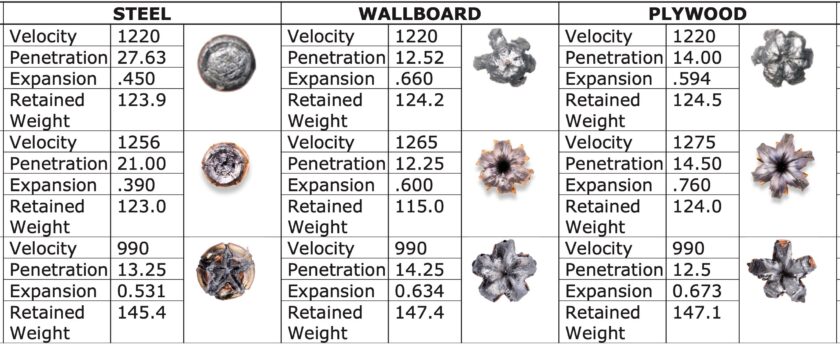
There is also the perception that hollowpoints are very fragile. This is evidenced by my coworkers fear that Hydra-Shok bullets would “disintegrate” upon hitting a car. There is a kernel of truth to this idea, but only in older, poor designs, or in gimmick ammo. Modern hollowpoints almost universally have a jacket that is chemically bonded to the core. Chemical bonding has solved this issue of weight retention, keeping the core and jacket together in tissue, and keeping the bullet together while shooting through barriers. I’d posit that a bonded JHP is perhaps tougher than a cheap JHP round.
Use High-Quality JHPs for Self-Defense
If I recommend that you don’t use FMJ for self defense, what do I recommend? I recommend using what nearly every single law enforcement agency in the United States uses: a high-quality jacketed hollowpoint. Some specific recommendations are the Speer Gold Dot, Speer G2, Federal HST, Hornady Critical Duty, Sig V-Crown, Winchester Defender/PDX-1/Ranger. These rounds are proven performers. They have all done well in FBI protocol testing. And if they fail, the basically revert to the same performance provided by a JHP.
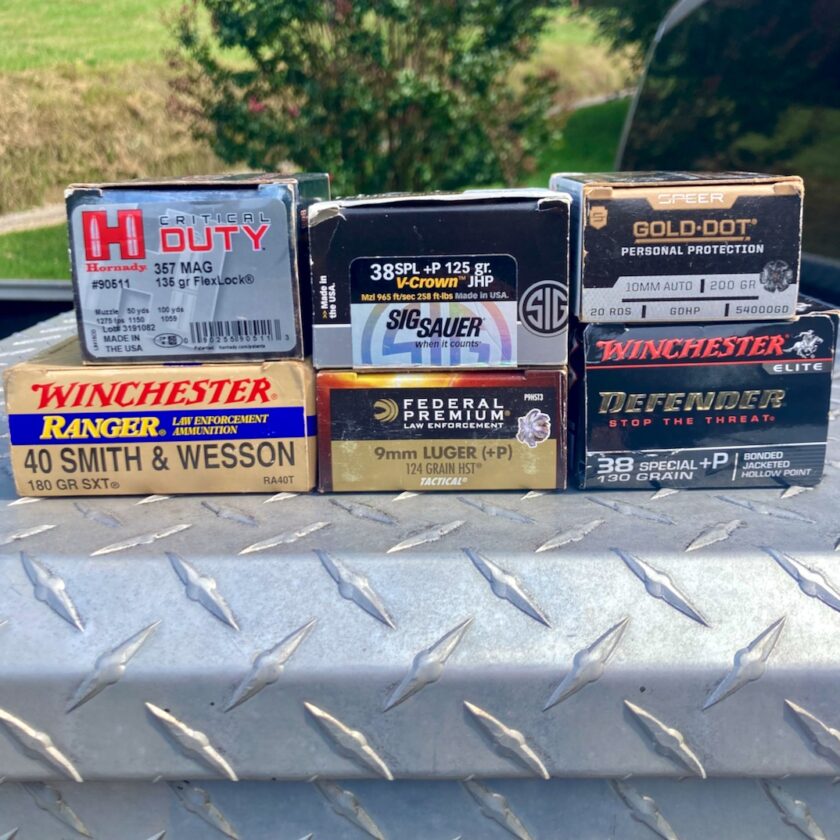
Regardless of what ammo you use, it must be reliable. You need to shoot enough to ensure reliability in the firearm it is carried in. Unfortunately this can cost a little bit of money. No matter what, it MUST be reliable. It is also important to remember that only hits count. Your chosen ammo should hit to your sight’s point of aim. This may be a matter of playing will bullet weights and +P/standard pressure to find one that does.
Other Reasons Not to Use FMJ Ammo
There are a few other reasons I recommend using a high-quality hollowpoint round over FMJ ammo.
First, full metal jacket (FMJ) ammo is rarely made from premium components. Modern self-defense ammunition is made from the best components possible. This includes not only the bullet, but also the case, the propellant, and the primer. First, the case itself is typically made from nickel-plated brass. This makes it feed more smoothly and, unlike brass, is highly corrosion resistant.
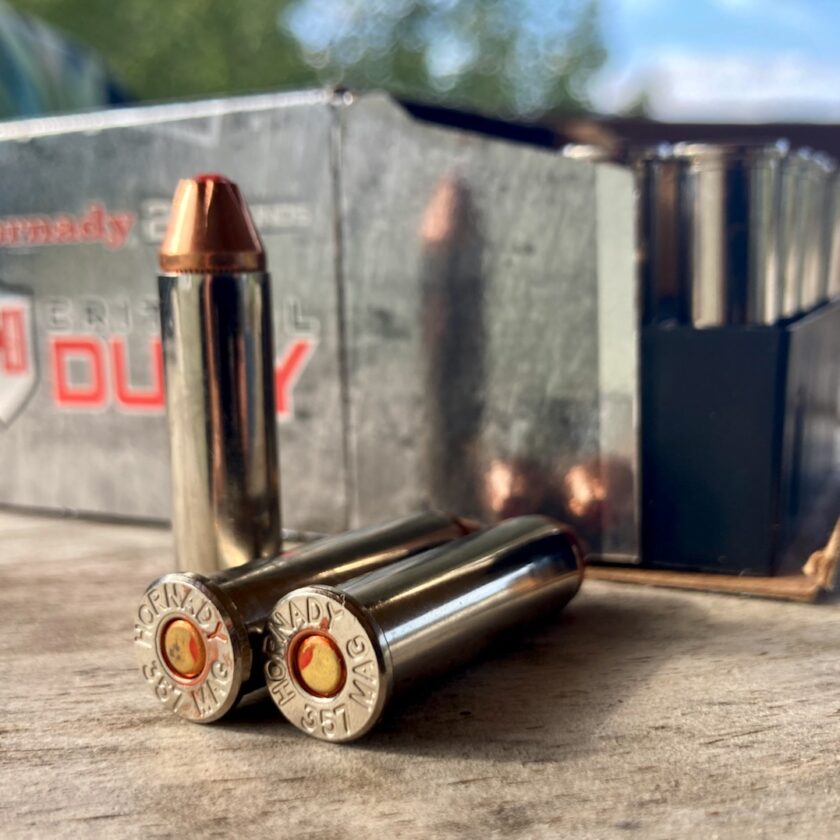
More importantly, though, care is taken to seal the case mouth against moisture. Even if you haven’t taken a dunk with your pistol on, you’re probably sweating profusely in and around it on a daily basis. The primers on premium ammo are also sealed to make them waterproof. Premium self-defense ammo stands a much higher chance of being waterproof. Yet another benefit of using premium defensive ammunition is low-flash powder. This prevents a bright muzzle flash from reducing your night vision.
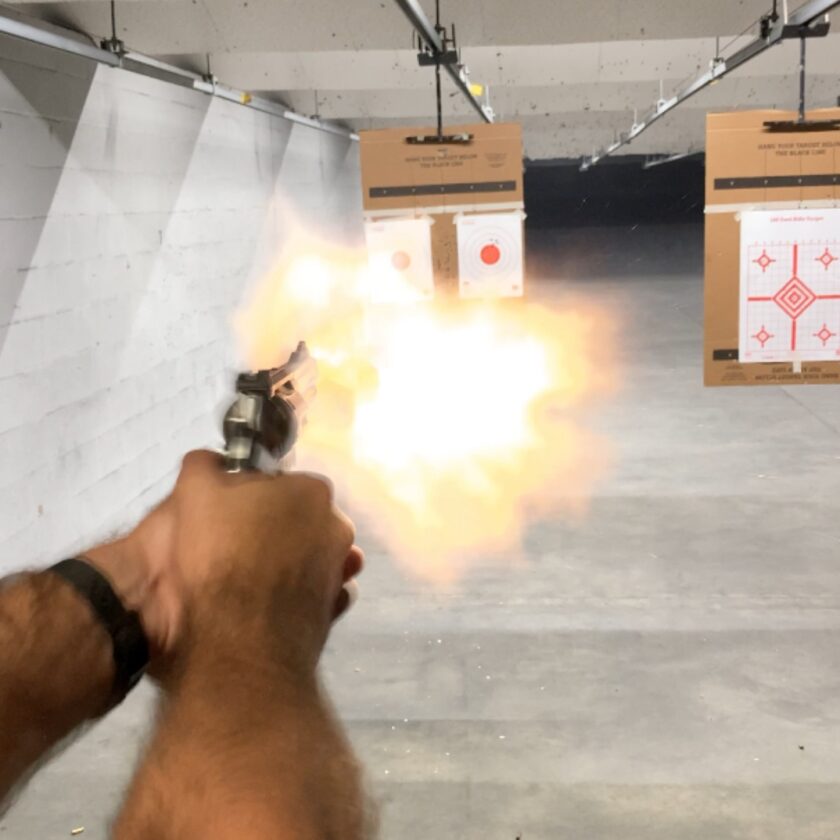
The most important benefit of premium duty ammo is the quality control. That’s part of the reason such ammo is so much more expensive: more attention goes into each round. Quality control is much stricter than cheap range ammo. I’ve seen a quite a few ammunition-related malfunctions. I’ve written about some of them. All the ones I’ve seen have been with FMJ target ammo. I’ve yet to see a malfunction with premium ammo. Admittedly I’ve shot much less of it, but I have shot several thousand rounds of high-end hollow points.
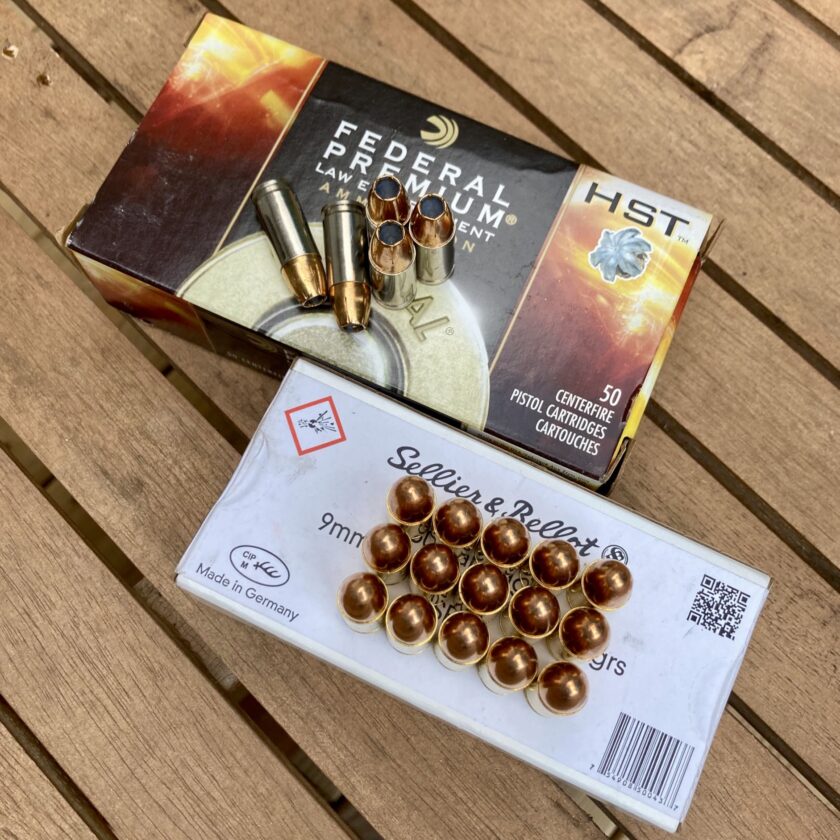
Sometimes FMJ Ammo is the Right Choice
I just made this big, impassioned case for not using FMJ ammo for self-defense. But there are some times when it is appropriate. Here are three. It is the only ammo that feeds in your gun. If you purchased a modern, high-quality handgun like a Sig P365, Glock 48, Smith & Wesson Shield, or Springfield Hellcat, it should feed with just about anything. If you have some surplus piece, an off-brand import, or a 1911, it might not feed hollowpoints well. I would prefer FMJs that are reliable to hollow points that aren’t all day long.
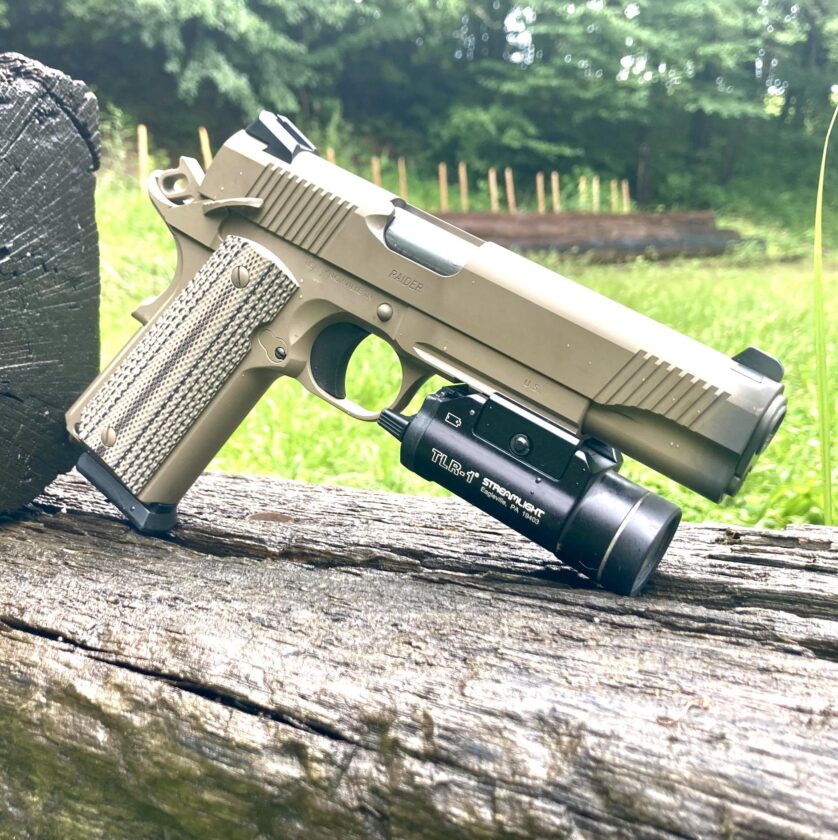
FMJ is also the right choice in marginal calibers. In .32 ACP I wouldn’t carry anything but FMJs. Hollowpoints might expand, but the bullets just aren’t pushed hard enough to make them penetrate deeply and expand. The .380 is another caliber for which I’d probably carry and recommend FMJs. Once you’re into 9mm and up, there’s usually enough velocity to support both good expansion and adequate penetration.
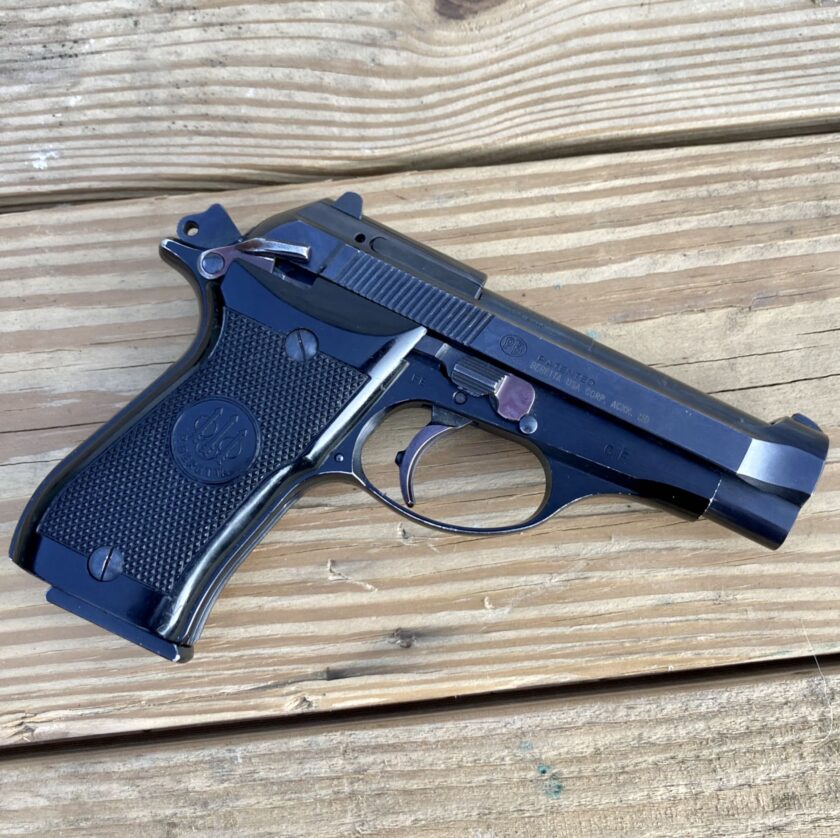
Finally, if FMJ is all you got, it’s all you got. It’s certainly better than a sharp stick and I wouldn’t hesitate to use it if it’s all I had. If better options were available to me, I’d go with the better options.
To Repeat Myself: Don’t Use FMJ Ammo for Self Defense
The only thing going for FMJ ammo is penetration. If you carry a high-quality hollowpoint, you have expansion and penetration that has been carefully calibrated, and field proven to perform on and in human tissue. If your high-quality JHP fails…you still get the same performance you would have gotten with FMJ. In some cases, FMJ is the best choice. Most of the time, though, it is not.As Greg Ellifritz says in his “Don’t Dig the Rig” series,
Equipment isn’t the most important factor in winning your defensive encounter. With that said, you don’t want to intentionally diminish your performance by using bad gear.
Your ammunition choice is a pretty small part of the battle overall. But don’t needlessly diminish your firearm’s performance by using sub-par ammo.




